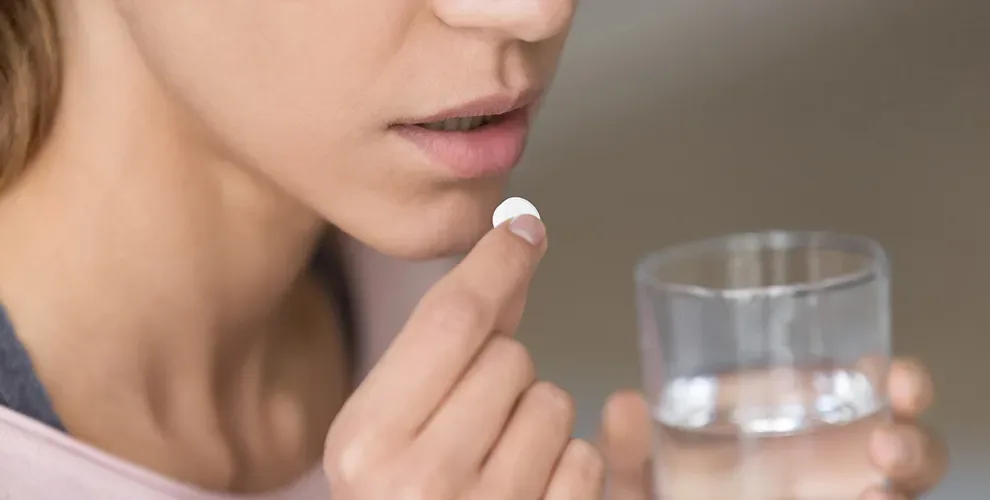7 Tips for Root Canal Aftercare: Pain Relief & Avoiding Infection.

Table of Contents
- Common Procedure Aftercare
- Aftercare Steps
- Good Oral Health
- References
Most people experience at least mild or moderate discomfort and pain after getting a root canal.
If pain gets worse or does not go away in a few days, work with your dentist to determine the underlying cause. Otherwise, practice good aftercare at home to avoid infection and manage pain.
Root canals: common procedures that require aftercare.
A root canal can help save a tooth from damage associated with decay. On average, 16.4 million teeth in the United States receive root canal treatment every year.
While the term root canal may seem a little intimidating, as it is often used to describe an excruciating situation, this is a very common procedure with great results for the majority of people who receive it. It is an outpatient procedure that can be performed by an endodontist, using local anesthesia.
Recovery is also fairly rapid. It takes only a few days until pain and swelling subside and you begin to feel normal.
Surveys have shown that 3 to 6 percent of people who get root canals experience severe pain in the days after treatment.
7 steps to take after a root canal to relieve pain and avoid infection.
Beneath the enamel and dentin layers in your teeth is a type of tissue called pulp. The pulp contains nerve endings, blood vessels, and connective tissue to help your tooth grow during its development. If you get a gum infection or break the tooth, the pulp can become infected, leading to the need for a root canal.
Fortunately, this procedure is quick, simple, and comes with an easy recovery. You will experience a little pain and discomfort in the days following it. You can manage this pain at home with some common post-dental procedure recommendations.
Here are steps you can take to treat pain after a root canal and encourage the healing process:
Your dentist may prescribe a few days of painkillers and antibiotics after your root canal, especially if the reason for the procedure was underlying infection. Take these medications as prescribed, and finish the course of antibiotics regardless of whether you feel better or not.
If your dentist does not prescribe pain medication, they will likely recommend some over-the-counter medicines like acetaminophen or ibuprofen. They will tell you specific doses to take. Ask about any potential interactions with other medications you are prescribed.
Pain and discomfort from many dental procedures can be eased with a warm saltwater rinse. Saline rinses reduce the chances of infection and inflammation, and warm water can make your mouth feel soothed overall. Be sure the water is not hot, as this can irritate gum tissue and make pain worse later.
Your dentist will also give you instructions on returning to your regular oral hygiene routine. You can gently brush and floss around the area, but be careful not to irritate sensitive tissues. You may need to avoid alcohol-based mouthwashes for a few days as the tissues heal.
At least for a few days, as pain and swelling subside, stop smoking and drinking alcohol. These intoxicants can interact with prescription medications, and they can make the gum tissue more painful.
In the first 24 to 48 hours, you may have swelling and pain in your jaws because your mouth was open for a long time while undergoing the root canal. Apply an ice pack, wrapped in a towel, to reduce tissue inflammation and pain.
Avoid spicy, oily, crunchy, and sugary foods for at least 24 to 48 hours, as these could trigger inflammation in the root canal area. Eat softer foots that are high in vitamin A and C. Eggs, cooked carrots, and sweet potatoes are great options for the first few days to a week after the surgery. Smoothies also work well, but avoid ingredients with too much sugar.
The importance of good oral health after a root canal.
Although root canals are common procedures, you can still expect to experience some discomfort, pain, and fatigue after the procedure. It is still a type of surgery, and your body will need time to heal.
On top of the above recommendations to reduce pain and avoid infection, there are some additional steps you can take to support overall healing.
Avoid exerting yourself for a few days, until the pain subsides. If you regularly jog or practice vinyasa yoga, take a break from your regime for a few days. Anything that shakes your head and jaw or forces blood to rush to the area will cause more pain and discomfort in the long run.
After a couple days, you can begin to engage in gentle exercise. After a week, you can return to your normal exercise regime.
Prop your head up at night while you sleep, at least for the first two or three days, to prevent blood from rushing to your head at night. This reduces the likelihood of swelling so you will wake up in less pain.
For the first two or three days, chew on the opposite side of your mouth from the root canal. This helps to keep food from getting lodged in the area. It also reduces pressure on these sensitive tissues while they heal.
Be sure to avoid sticky, hard, or crunchy foods for some time, at least on the side of your mouth with the root canal, until the filling is covered with a crown.
Covering the tooth with a crown is the final step after getting a root canal procedure. If you damage the underlying filling, you may need to undergo another operation or even lose the tooth altogether.
